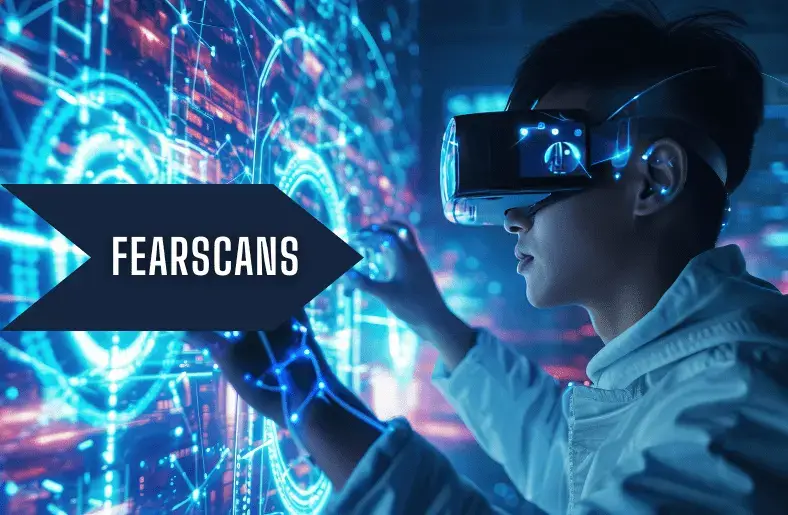Fearscans
Overview of Fearscans Technology and Its Purpose
Fearscans represent a groundbreaking development in the realm of digital analysis and emotional health. Utilizing advanced data collection and analysis techniques, this technology assesses emotional states to provide insights for therapeutic interventions. Its primary aim is to enhance emotional well-being, making it a pivotal tool in modern mental health care.
Definition and Evolution of Fearscans
Fearscans began as tools to support mental health professionals by providing data-driven insights into patients’ emotional conditions. Over time, their application has expanded, integrating with various digital health tools, reflecting a broader trend of digitization in healthcare and personal wellness.
Technological Framework
Detailed Explanation of the Technology Behind Fearscans
The core of Fearscans technology lies in its use of biometrics and artificial intelligence to analyze physiological data. Sensors gather data such as heart rate variability and skin conductance, which are processed using sophisticated algorithms to deduce emotional states. This integration of AI helps in crafting highly accurate emotional profiles.
Data Collection Methods and Analytical Processes Used
Fearscans employ non-invasive sensors to monitor physical responses, which are then analyzed to interpret emotional signals. This method ensures a thorough analysis, providing users and professionals with actionable insights into emotional well-being.
Impact on Emotional Well-being
Exploration of How Fearscans Influence and Improve Emotional Health
By providing a detailed view of one’s emotional landscape, Fearscans facilitate a better understanding of personal emotional triggers. This insight allows for more effective management of conditions such as anxiety and depression, significantly enhancing the quality of life for users.
Statistics on Effectiveness
Research shows that Fearscans improve emotional management practices, with users experiencing reduced anxiety levels and better overall emotional resilience. These statistics underscore the effectiveness of Fearscans in real-world settings.
Real-world Applications and Case Studies
Detailed Case Studies Demonstrating the Application and Benefits of Fearscans
Case studies from clinical settings reveal how Fearscans are used to tailor therapeutic approaches specifically to individual emotional profiles, enhancing the effectiveness of treatments for mental health disorders.
Examples from Various Sectors: Healthcare, Workplace, Personal Development
In healthcare, Fearscans assist in creating personalized treatment plans. Workplaces use them to monitor and improve employee well-being, while in personal development, they help individuals gain deeper emotional insight, aiding in self-improvement efforts.
Comparative Analysis with Traditional Methods
Comparison of Fearscans with Traditional Emotional Analysis and Therapy Methods
Unlike traditional methods that rely heavily on subjective interpretation, Fearscans provide a quantitative, data-driven approach. This allows for a more objective assessment of emotional states, offering a complementary tool alongside traditional psychological evaluations.
Benefits and Limitations of Both Approaches
While Fear-scans offer precise measurements, they lack the nuanced understanding that comes from human interaction. Thus, combining Fear-scans with traditional methods can provide a more holistic approach to emotional health.
Future Developments and Innovations
Predictions for Future Enhancements in Fearscans Technology
Anticipated advancements in Fear-scans include greater accuracy and user interface improvements, making them more accessible to non-professionals. Innovations may also extend to predictive analytics, which could foresee emotional dips and provide preemptive care recommendations.
See also: 6463276197: Unveiling Its Significance and Applications
Potential New Features and Their Expected Impacts
Future features could integrate augmented reality for therapeutic purposes, offering immersive experiences that help manage emotional states more effectively. Such innovations will likely make Fear-scans a staple in preventive healthcare.
Challenges and Ethical Considerations
Discussion of Privacy Concerns, Data Security, and Ethical Implications
The personal nature of data collected by Fear-scans raises significant privacy and security concerns. Ethical use of this data is critical, requiring stringent safeguards and clear user consent processes.
Regulatory and Societal Challenges Faced in Implementation
Adopting Fear-scans on a wide scale involves navigating complex regulatory landscapes and societal skepticism. Transparent practices and robust benefits will be key in gaining public trust.
Conclusion
Fearscans are set to transform the landscape of emotional health technologies. As they become more integrated into everyday life, their potential to enhance well-being and provide support in mental health care is immense. With ongoing advancements, Fear-scans will continue to offer innovative solutions, reshaping our approach to understanding and managing emotions.

